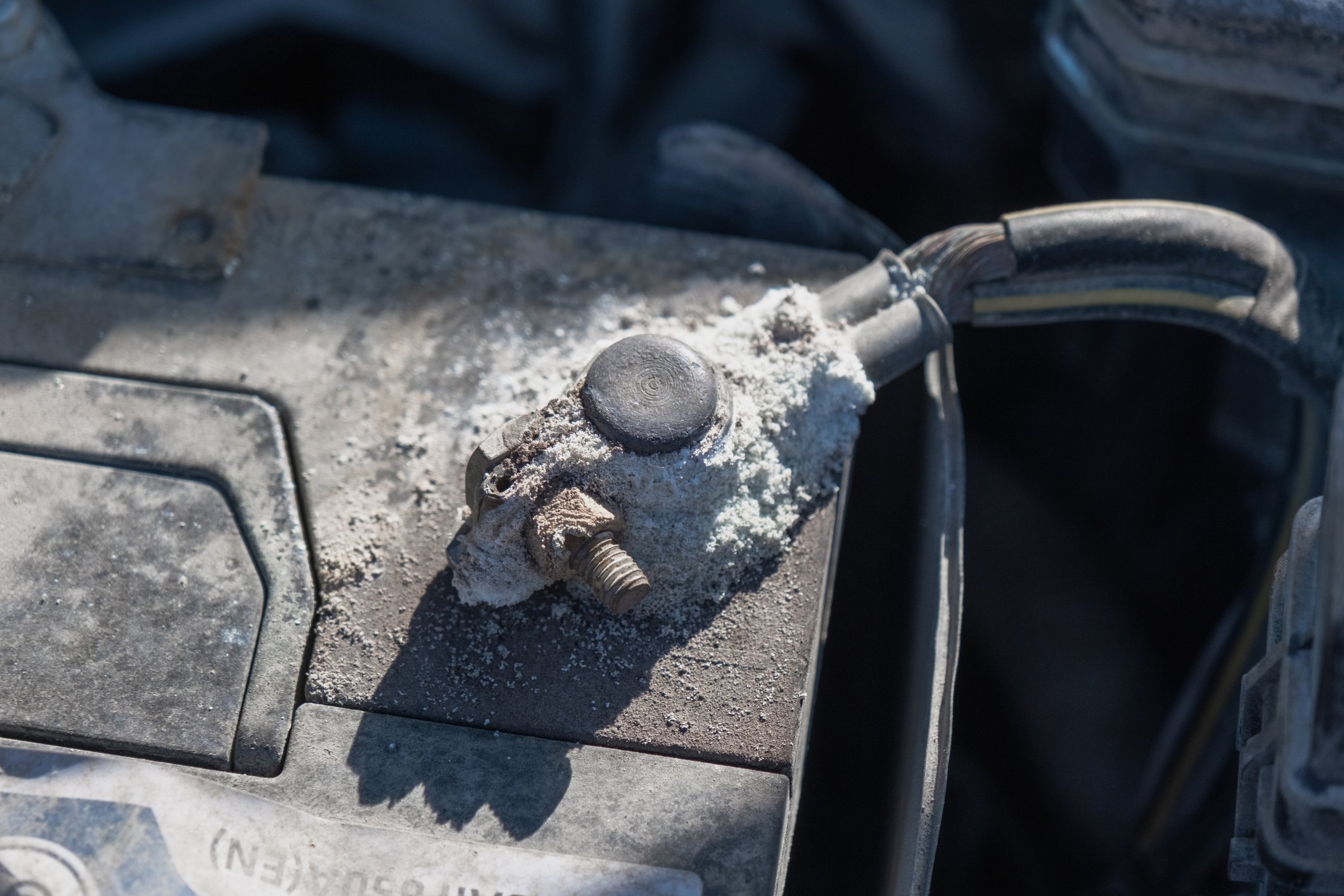Why Is My Battery Light On?
If your car’s battery warning light is illuminated and remains lit as you drive, that’s not business as usual. It means there’s an issue with your vehicle’s charging system that could eventually leave you stranded on the side of the road.
The good news is that many of the most common causes are relatively simple fixes and our Tinker experts are here to help you pinpoint the problem.
Here are the five most common problems that trigger a battery light, from the easiest to fix to the most difficult.
Need assistance or more helpful DIY advice? Speak to one of our Tinker Experts today!
1. Loose or Corroded Battery Connections
 A poor connection prevents the charging system from operating correctly, triggering the battery light. The problem could be as simple as a loose battery cable or corrosion on the battery terminals.
A poor connection prevents the charging system from operating correctly, triggering the battery light. The problem could be as simple as a loose battery cable or corrosion on the battery terminals.
To inspect the connections, make sure the engine is off. Then, if either of the battery cables is loose or you see white or greenish gunk on the terminals, it's time to act.
If you find a loose cable, simply ensure it is seated correctly and tighten it. If you find corrosion, disconnect each cable – negative (-) first, followed by positive (+) and then use a wire brush and a paste made from baking soda and water to scrub the corrosion away. Once the terminals are clean and dry, reconnect the cables in reverse order (positive first) and retighten.
2. Dying Battery
Most 12-volt car batteries have a lifespan of about five years. As the battery reaches its end of life, it stops being able to hold a charge, causing the battery light to come on. Other symptoms of a dying battery can include slow engine cranking (when the engine turns over more slowly than normal) and a swollen battery case.
If you suspect your battery is on its last legs, test it with a multimeter. A fully charged battery should read around 12.6 volts when the engine is off. If it's significantly lower, it's time for a new battery.
3. Blown Fuse or Bad Wiring
 Something as simple as a blown fuse or disconnected/loose wire can interrupt the flow of electricity through the charging system and trip the battery light. Before inspecting fuses or wiring always disconnect the battery’s negative cable to avoid electric shock and short circuits.
Something as simple as a blown fuse or disconnected/loose wire can interrupt the flow of electricity through the charging system and trip the battery light. Before inspecting fuses or wiring always disconnect the battery’s negative cable to avoid electric shock and short circuits.
Fuses protect your car's electrical system from power surges, which can happen when a component fails or even when you're jump-starting the engine. Fortunately, they are simple to inspect and replace.
First, locate your fuse box (usually under the dashboard or in the engine bay) and inspect each fuse related to the charging system (there’s a diagram in your owner’s manual). If you find one that's discolored or has a broken filament, replace it.
Faulty wiring is a little bit harder to spot. But a good place to start is by checking the wires running to and from the charging system, including the alternator and battery. Look for signs of wear such as frayed insulation, burnt spots or loose connections.
4. Serpentine Belt Issues
The serpentine belt turns the accessories at the front of the engine, including the alternator (a small generator driven by the engine). If that belt is worn, loose or broken, it won’t spin the alternator properly, preventing it from generating power. The telltale symptom of a bad serpentine belt is a high-pitched squeal when you start the car or accelerate.
Start by inspecting the belt for cracks, fraying or glazing (a shiny appearance on the underside). If you notice any of these signs, it needs replacing. Otherwise, it may break while you’re driving, causing the alternator and other accessories to suddenly stop working. A Tinker expert is available to double-check what you think you see and to guide your efforts to replace it.
Changing the serpentine belt is a relatively straightforward job. It typically involves loosening the belt tensioner, slipping off the old belt and then positioning the new one before retightening the tensioner to the manufacturer's specifications.
5. Faulty Alternator or Voltage Regulator
 As the engine runs, it turns the alternator to keep the battery charged and power electrical components like the headlights and windshield wipers. This current is kept in check by a component within the alternator called the voltage regulator.
As the engine runs, it turns the alternator to keep the battery charged and power electrical components like the headlights and windshield wipers. This current is kept in check by a component within the alternator called the voltage regulator.
If either the alternator or its voltage regulator is malfunctioning, it will not only cause the battery light to illuminate, but you may also start to notice things like dim or flickering interior lights.
To investigate, test the voltage with a multimeter at the battery terminals while the engine is running. A healthy system should read between 13.5 and 14.5 volts. If the number is lower, the alternator is failing. If it is higher, the culprit is most likely the voltage regulator.
In most vehicles, the voltage regulator is built into the alternator. If so, you may need to replace the entire assembly regardless of which part is at fault.
For more helpful automotive DIY advice, speak to one of our Tinker Experts today!



